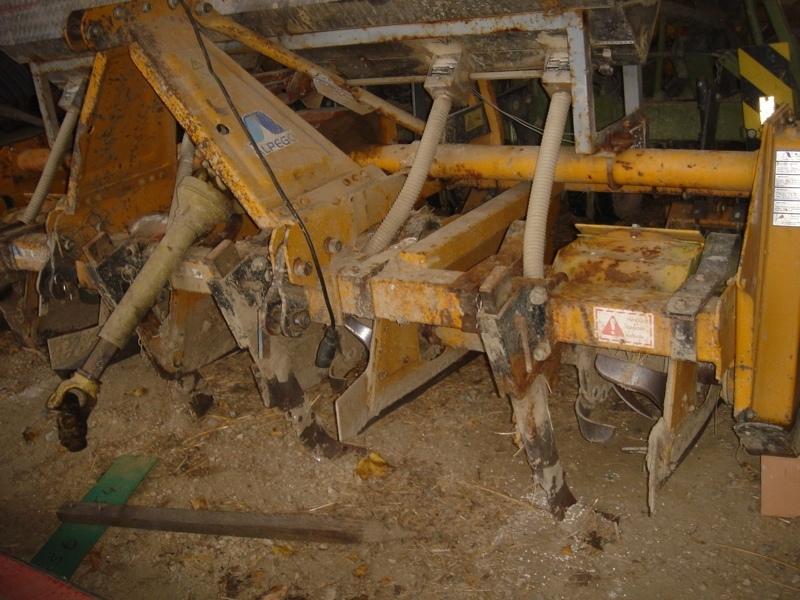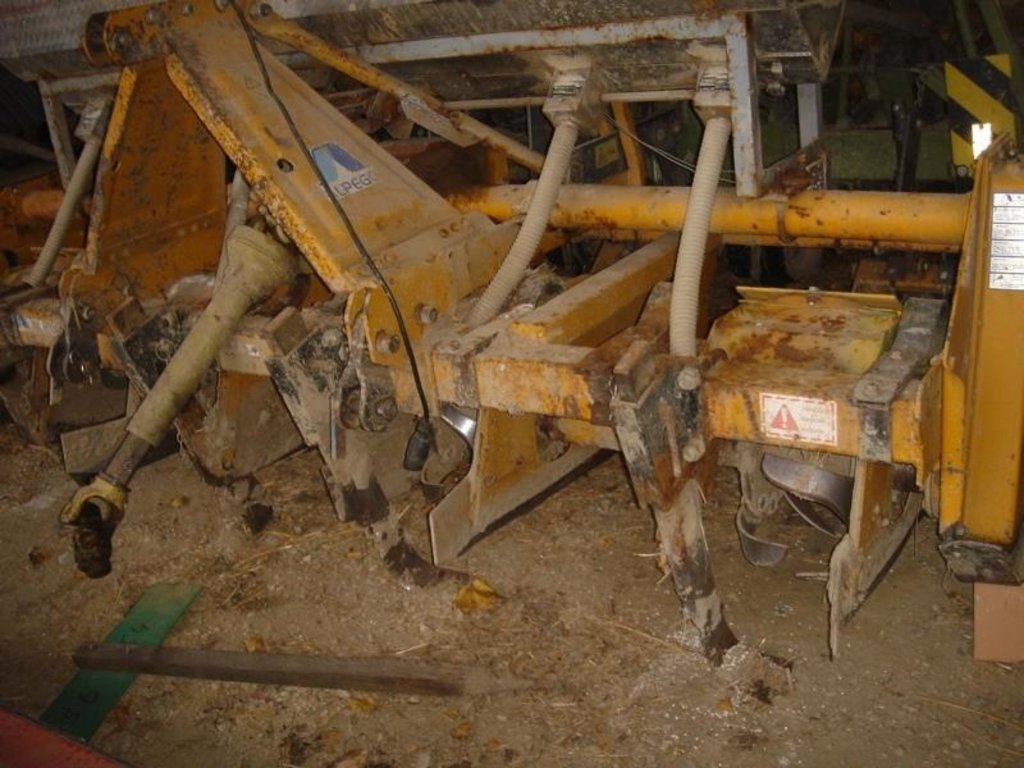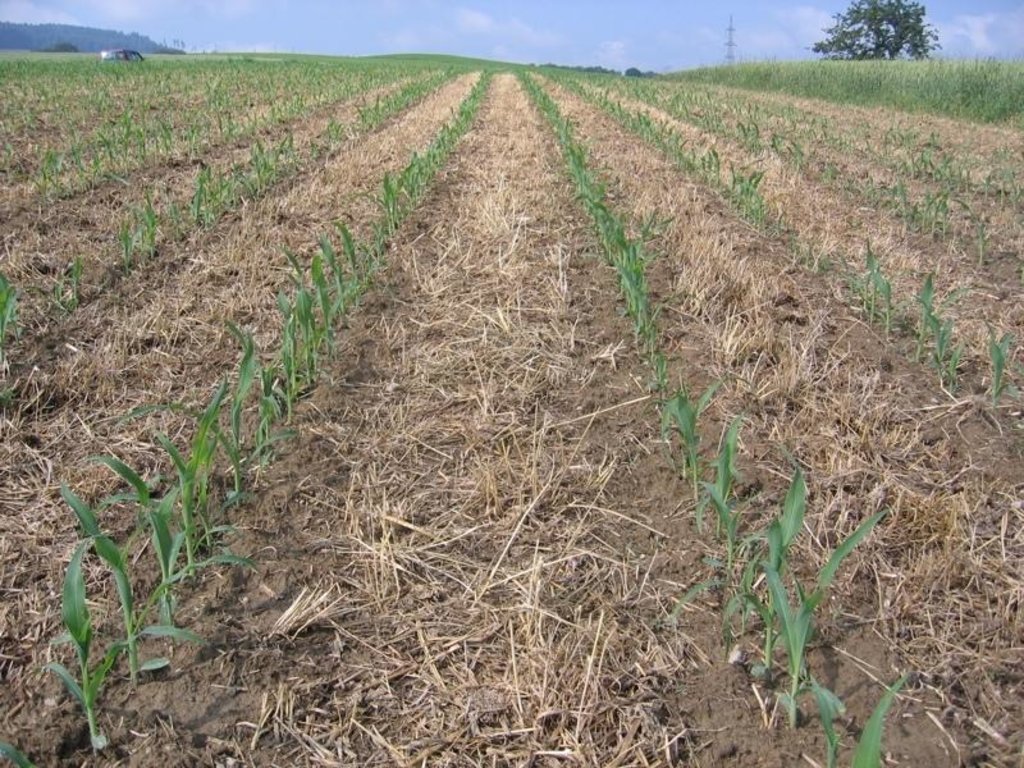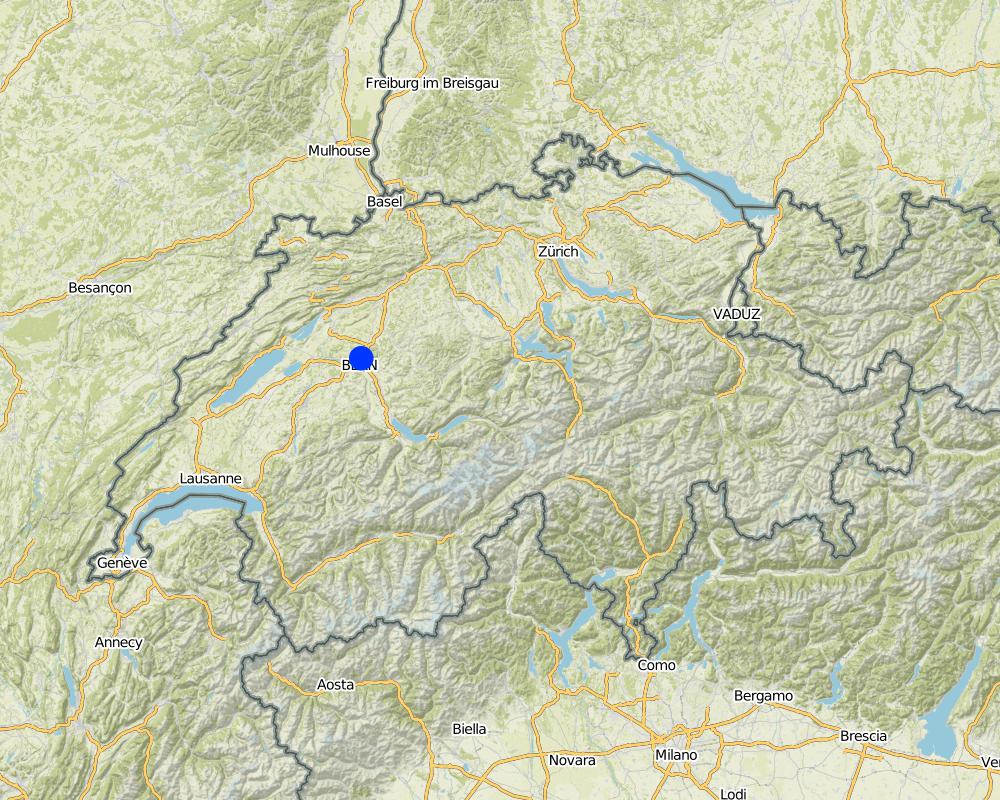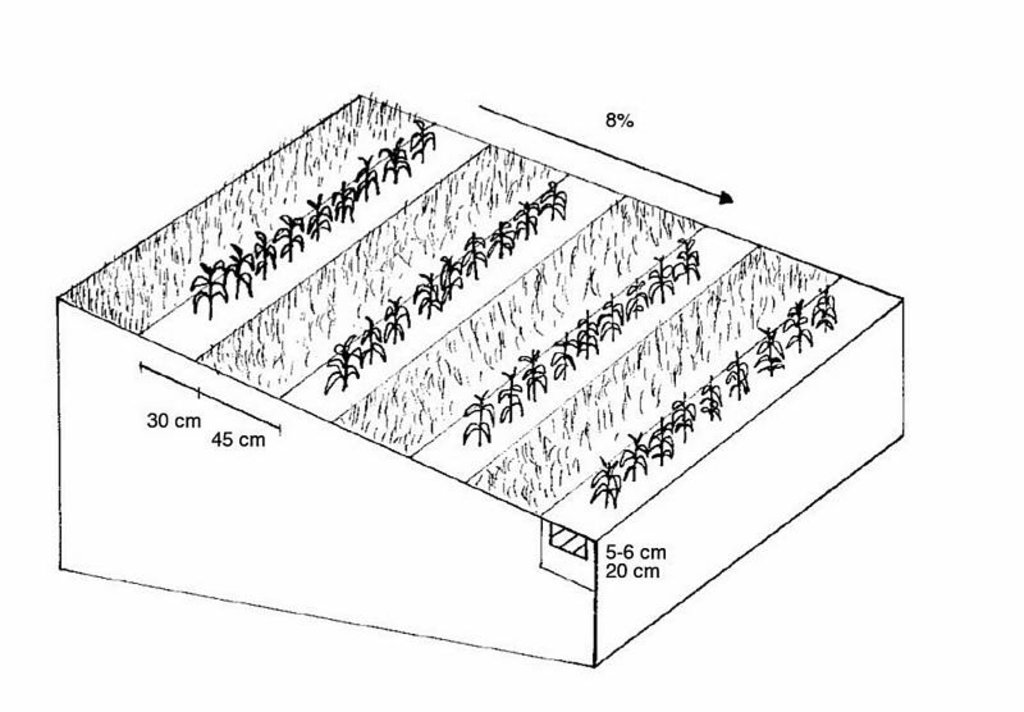Maize strip tillage [Switzerland]
- Creation:
- Update:
- Compiler: Nicole Guedel
- Editor: –
- Reviewers: Fabian Ottiger, Alexandra Gavilano
Streifenfrässaat
technologies_1009 - Switzerland
View sections
Expand all Collapse all1. معلومات عامة
1.2 Contact details of resource persons and institutions involved in the assessment and documentation of the Technology
land user:
Schneider Markus
Schneider Agrarservice
Switzerland
land user:
Bangerter Roland
Switzerland
Name of the institution(s) which facilitated the documentation/ evaluation of the Technology (if relevant)
CDE Centre for Development and Environment (CDE Centre for Development and Environment) - SwitzerlandName of the institution(s) which facilitated the documentation/ evaluation of the Technology (if relevant)
Bangerter-Gisleren - SwitzerlandName of the institution(s) which facilitated the documentation/ evaluation of the Technology (if relevant)
Schneider Agrar-service - Switzerland1.3 Conditions regarding the use of data documented through WOCAT
The compiler and key resource person(s) accept the conditions regarding the use of data documented through WOCAT:
نعم
2. Description of the SLM Technology
2.1 Short description of the Technology
Definition of the Technology:
Maize strip tillage is a technology used for corn cultivation. It cultivates only thoses stripes in which the seed is added to.
2.2 Detailed description of the Technology
Description:
Maize strip tillage is a soil-conservation method used in crop production. First of all the grass in the area needs to be prepared by splattering round-up some 3-10 days prior seeding. Then the actual maize strip tillage machine carves a stripe and the seed are inserted within this 30 cm strip. At the same time fertilizer is added on these cultivated stripes. Between those cultivated stripes the mulch-grass stripes (45cm) are unmechanised and protect the soil by increasing its stability. The work is done within one working unit compared to the traditional technique whereas the farmer needs to drive for each working step separately.
There are some clear ecological advantages using this technology. Like in a minimum tillage system the stability of the soil is enhanced.
Due to these mulch-stripes the matrix of the soil is more complex and therefore the stability is better especially during harvest in September. The interviewed farmer said compaction would occur less and the risk of soil erosion is decreasing. Especially in hilly areas the technology is suitable since soil erosion is a problems when using a plough. Another advantage is the better soil structure due to the mulch stripes and the minimal tillage ensures that the soil is more stable.
A high level of knowledge about the natural environment is a required when adopting this technology. On one hand, the farmer must time the date for seeding adequately to the natural conditions (not too humid). On the other hand, the farmer has to apply Glyphosphat one to three times after the seeding in order to guarantee an optimal growth period for the corn.The interviewed farmer found it problematic to use this amount of Glyphosat and he was not sure about the effects in the water. The timing to start seeding with this technology may be later cause corn is sensitive towards rival plants, low temperatures and humidity. When adopting the technology the farmer needs to have a certain level of knowledge and experience in order to guarantee a sound harvest.
This technology is applied in the village Seedorf (Canton Bern) after the farmers made positive experiences and if they see the economic advantages too. Generally there is only one work step needed for the seeding which lowers the costs compared to the traditional technology with about a third. Furthermore the subsidies of the canton of Berne enables farmers to apply this technology for the first 5 years. In this cycle the areas are usually left with grass first, second cultivated with corn (using maize strip tillage), then sugar beets and after all two years of cereals (wheat and rye) before the cycle starts again.
2.3 Photos of the Technology
2.5 Country/ region/ locations where the Technology has been applied and which are covered by this assessment
بلد:
Switzerland
Region/ State/ Province:
Seedorf
Further specification of location:
Bern
Comments:
27.2 km2 are owned by the farmer whereas he is applying the technology on 5 km2. He said that he is hired as a contract worker and applies the technology on approximately 90 km2. Total area covered by the SLM Technology is 90 km2.
Map
×2.7 Introduction of the Technology
Comments (type of project, etc.):
A neighbouring farmer adapted the technology and after the first successful harvest Roland Bangerter bought a machine too some 5 years ago and started apply this technology.
3. Classification of the SLM Technology
3.2 Current land use type(s) where the Technology is applied

الأراضي الزراعية
- Annual cropping
Annual cropping - Specify crops:
- cereals - maize
- cereals - rye
- cereals - wheat (spring)
- root/tuber crops - sugar beet
Comments:
Major land use problems (compiler’s opinion): soil erosion in hillside areas
Major land use problems (land users’ perception): soil degradation in general
3.5 SLM group to which the Technology belongs
- minimal soil disturbance
- cross-slope measure
3.6 SLM measures comprising the Technology

agronomic measures
- A1: Vegetation/ soil cover
Comments:
Main measures: agronomic measures
Type of agronomic measures: cover cropping, retaining more vegetation cover, mulching, manure / compost / residues, rotations / fallows, minimum tillage
3.7 Main types of land degradation addressed by the Technology

soil erosion by water
- Wt: loss of topsoil/ surface erosion
- Wg: gully erosion/ gullying

physical soil deterioration
- Pc: compaction

biological degradation
- Bc: reduction of vegetation cover
Comments:
Main type of degradation addressed: Wt: loss of topsoil / surface erosion, Pc: compaction
Secondary types of degradation addressed: Wg: gully erosion / gullying, Bc: reduction of vegetation cover
Main causes of degradation: crop management (annual, perennial, tree/shrub) (the use of plough increases the danger of soil erosion)
3.8 Prevention, reduction, or restoration of land degradation
Specify the goal of the Technology with regard to land degradation:
- prevent land degradation
- reduce land degradation
Comments:
Main goals: mitigation / reduction of land degradation
Secondary goals: prevention of land degradation
4. Technical specifications, implementation activities, inputs, and costs
4.1 Technical drawing of the Technology
Technical specifications (related to technical drawing):
Technical knowledge required for field staff / advisors: high
Technical knowledge required for land users: low
Main technical functions: improvement of topsoil structure (compaction), increase of infiltration
Secondary technical functions: improvement of ground cover, increase in organic matter
Manure / compost / residues
Material/ species: mulch stripes
Rotations / fallows
Remarks: a cultivation cycle of 5 year is needed
4.3 Establishment activities
| Activity | Timing (season) | |
|---|---|---|
| 1. | Buying a 120 PS tractor | |
| 2. | Buying a machine for maize strip tillage | |
| 3. | buying a sowing machine |
4.4 Costs and inputs needed for establishment
| Specify input | Unit | Quantity | Costs per Unit | Total costs per input | % of costs borne by land users | |
|---|---|---|---|---|---|---|
| Equipment | 120 PS tractor | Farm | 1,0 | 126000,0 | 126000,0 | 100,0 |
| Equipment | Machine for maize strip tillage | Farm | 1,0 | 165000,0 | 165000,0 | 100,0 |
| Equipment | Sowing machine | Farm | 1,0 | 12600,0 | 12600,0 | 100,0 |
| Total costs for establishment of the Technology | 303600,0 | |||||
| Total costs for establishment of the Technology in USD | 303600,0 | |||||
4.5 Maintenance/ recurrent activities
| Activity | Timing/ frequency | |
|---|---|---|
| 1. | Adding some round-up on the field one week before technology is applied | 1 |
| 2. | Applying technology maize strip tillage | 1 |
| 3. | Adding herbicide on the mulch stripes | 1-3 |
| 4. | Harvest of corn | 1 |
6. Impacts and concluding statements
6.7 Strengths/ advantages/ opportunities of the Technology
| Strengths/ advantages/ opportunities in the compiler’s or other key resource person’s view |
|---|
|
Prevention of erosion How can they be sustained / enhanced? Maintain green cover. |
|
Improvement of soil quality (fertility, organic matter, moisture retention, soil structure) How can they be sustained / enhanced? Ensure that cover vegetation doesn’t compete with the vines; improve soil properties by applying mentioned agronomic measures. |
|
Contribution to a better balanced and more stable ecosystem (with living space for a wider range of organisms) How can they be sustained / enhanced? Specific management of cover crops (alternating treatment of inter-rows; find solutions to replace application of herbicide). |
| In the long-term economically beneficial because of cutting costs of restoration of soils and fertility loss after heavy erosion events. |
| Possibilities of farm income increase through marketing wine under the ‘vinatura’ label, certifying ecologically produced wine. |
6.8 Weaknesses/ disadvantages/ risks of the Technology and ways of overcoming them
| Weaknesses/ disadvantages/ risks in the compiler’s or other key resource person’s view | How can they be overcome? |
|---|---|
| General competition of water and nutrients depending on climate, soil depth and species of cover vegetation | Eliminate/reduce competitive effect of cover vegetation by cutting/mulching vegetation or ripping/ploughing soil. |
| Application of herbicides around vines because of undesirable vegetation in proximity of vine | Find alternative solutions, or minimise application of herbicides. |
7. References and links
7.1 Methods/ sources of information
7.2 References to available publications
Title, author, year, ISBN:
Güdel N . Boden- und Wasserkonservierung in Schweizer Rebbergen. Ein Beispiel im Rahmen von WOCAT. Unpublisheddiploma thesis.. 2003.
Available from where? Costs?
Centre for Development and Environment (CDE), University of Berne
Links and modules
Expand all Collapse allLinks
No links
Modules
No modules


